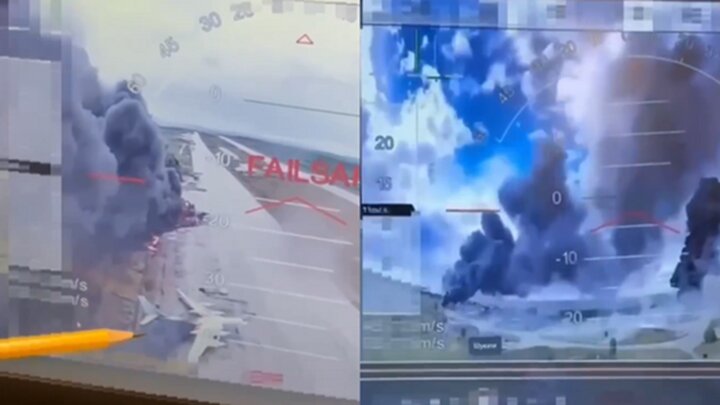Ukraine’s Massive ‘Spiderweb’ Operation: How It Destroyed Russian Bombers

Yesterday evening (June 1), ukraine executed an unprecedented operation codenamed “Spider’s Web”, targeting four Russian airbases deep inside russian territory. The attack-orchestrated by Ukraine’s Security Service (SBU)-reportedly destroyed or severely damaged over 40 Russian military aircraft, including strategic bombers and advanced reconnaissance planes. But how was this operation planned and executed?
18 Months of Silence, one Night of Blasts: Behind the Scenes
The operation employed a covert tactic: small but highly precise kamikaze drones concealed within wooden crates disguised as civilian cargo. These crates were transported by trucks near the targeted airbases before remotely opening to release the drones. AI-assisted navigation ensured precision strikes on runways and strategic aircraft.
The four targeted bases-Olenya, Belaya, Ivanovo, and Dyagilevo-span northern to central russia and serve as key hubs for strategic bombing campaigns against Ukraine. Simultaneous strikes maximized damage while overwhelming Russia’s defenses; some bases reportedly lacked adequate counter-drone systems.
The assault neutralized Tu-95/Tu-22M3 bombers and A-50 reconnaissance aircraft-losses President Volodymyr Zelenskyy claimed equaled nearly one-third of Russia’s long-range bomber capacity.Ukrainian officials estimate $7 billion in damages.
The West’s Shadow Role: Structural Support Without Direct Involvement
While no direct NATO/U.S. participation was confirmed:
- Aid included: Drone tech via UK/Latvia-led coalitions; financial investments in AI-guided systems; Starlink satellite networks (funded by U.S. DoD); NATO-developed Delta situational awareness software for target tracking.
- A disputed claim: Axios initially cited a Ukrainian official stating Washington was pre-briefed-later retracted as ”inaccurate.” Kyiv maintains operational independence.
Political Shockwaves Ahead Of Istanbul Talks
The strikes coincided with ceasefire negotiations mediated by Turkey after three years . A prisoner swap agreement (1000 captives each ) preceded Monday ‘ s scheduled second round where Kyiv plans to propose :
- A 30 – day truce leading to territorial talks based on current frontlines
- No recognition of occupied territories ; post - war military sovereignty guarantees
- Direct Zelenskyy – Putin talks contingent on progress
Analysts suggest “Spider ‘ s Web ” aims to shift psychological leverage before diplomacy . Moscow may retaliate militarily or demand clauses restricting future Ukrainian strikes – potentially stalling negotiations .




